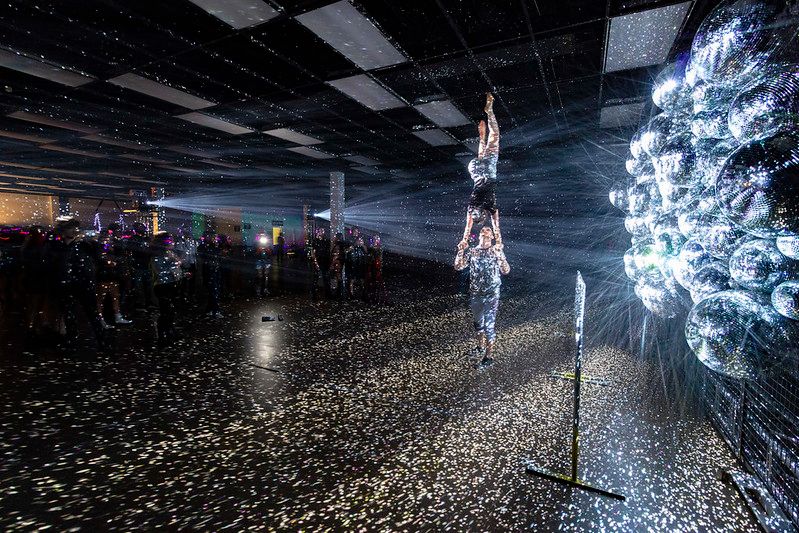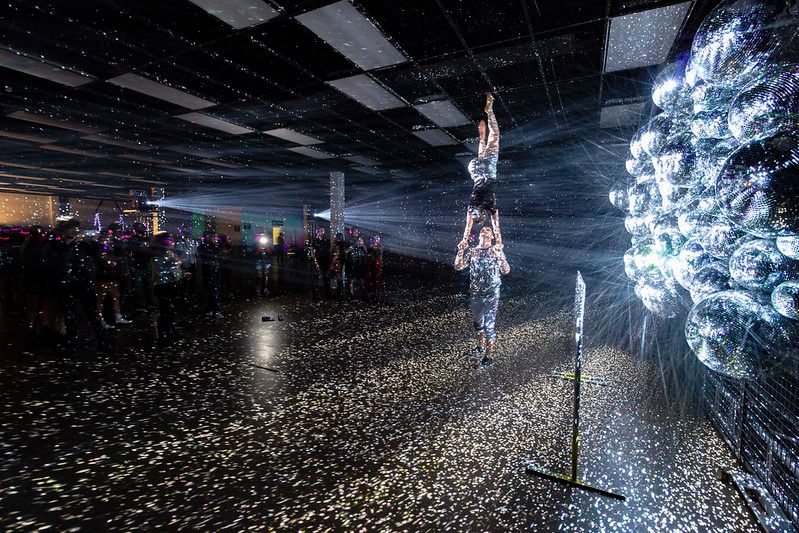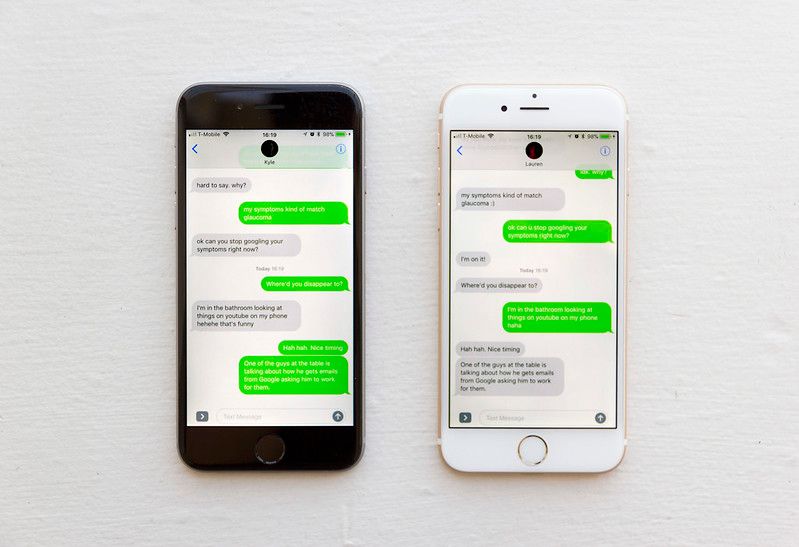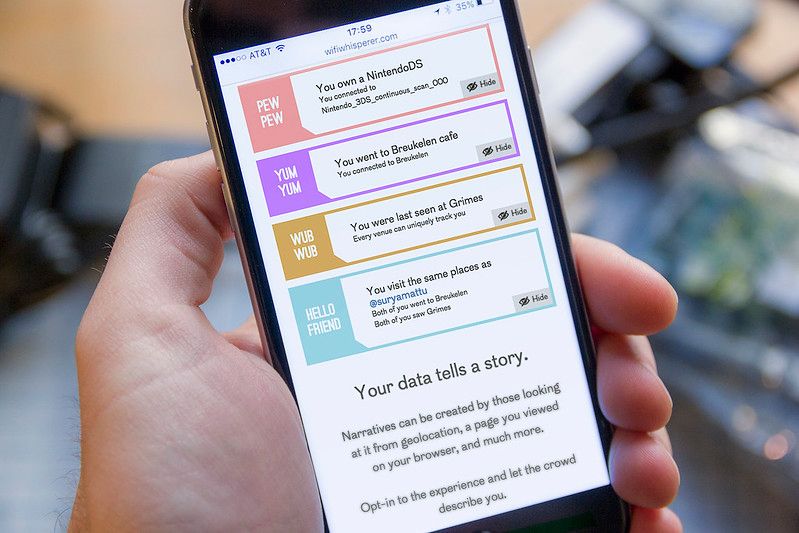Kyle McDonald interview: The Networked Condition
'The Networked Condition: Environmental Impacts of Digital Cultural Production' is a collaborative research project exploring digital arts through an environmental lens. Here we chat to Kyle McDonald.

At the start of 2020, Fast Familiar, Abandon Normal Devices and Arts Catalyst began The Networked Condition: Environmental Impacts of Digital Cultural Production, a collaborative research project exploring digital arts through an environmental lens. The project is part of The Accelerator Programme (led by Julie’s Bicycle and Arts Council England), which helps artists to advance their sustainable practice and share insights with their peers and the wider sector.
As part of The Networked Condition: Environmental Impacts of Digital Cultural Production, we’ve been speaking to artists and arts organisations whose work encompasses digital tools and environmental sustainability or activism, hoping to gain insight into a broad range of ideas and approaches. We’re writing up these case studies here as we go along, hoping that they’ll be a source of shared knowledge, inspiration or reflection for others too. You can find an interview with Invisible Flock here and one with Joana Moll here.
Here is the third case study, an interview with Kyle McDonald, an artist working with code in machine learning, computer vision, and social and surveillance tech. He makes interactive installations, sneaky interventions, playful websites, workshops, and toolkits for other artists working with code. His work explores the possibilities of new technologies - how they affect society, and how they can be used (and misused) to build alternative futures.
Tell us about you and your work.
It started with falling in love with AI and computer science in high school. I got started playing with really simple language models for chatbots, and that got me interested in what it feels like to meet alien intelligence. I think what I realised as a kid was that I really loved discovering and exploring new perspectives, and sharing them with people, but I didn't know that’s what an artistic practice is. So I went to study computer science at college. Eventually the AI lab director was like “what are you doing, you're not an AI researcher, I'm pretty sure you're an artist.” That slapped some sense into me and set me on the right path. So I went to do an MFA, which was 12 or so years ago, and I’ve been making work ever since.
After college I got more involved with some other scenes like the openFrameworks scene – making a lot of interactive installations, learning more about computer vision, thinking about computational interactivity as an instrument-building process, and exploring building instruments for novices versus instruments for virtuosos.
Then later I got really drawn to conceptual and performative work - I was inspired by Fluxus and the long history of very experimental art before computational art - I learned so much from that entire tradition… I did projects like keytweeter (2009), which tweeted everything I typed for a year - every 240 keystrokes went straight to Twitter. Or another Twitter project, Going Public, where my Twitter was open for anyone to post - if they sent me a DM, it would just post straight to my Twitter. It was uncomfortable at the start, but after a month it was massive. All those tweets are still on my timeline, so I'm sometimes wondering which one is someone going to pull up out of context, not knowing about the project. There was also Man and Woman In The Middle (2017), where my partner and I intercepted and modified each others’ text messages to present the best possible version of ourselves every time.
Sometimes I do sculptural things. Probably one of my longest-running pieces is Light Leaks from 2013. It was a room of 50 disco balls and a few projectors, then we used computer vision to map all the reflections bouncing off the balls. I'd been studying structured light and 3D scanning and which objects split light in multiple directions, so it was a conceptually and technically driven work. I don't see myself as primarily aesthetically driven, but I think I am driven by conceptual aesthetics and performative aesthetics. I end up working in a lot of different media. I have maybe the most experience with interactive installations, but my practice is quite varied right now.

What is the nvidia-co2 project?
nvidia-co2 is a command-line tool for showing real time gCO2eq emissions estimates for CPU and GPU usage, in various equivalencies - sea ice lost per hour, grams of beef consumed, number of light bulbs and so on. I made it for researchers and hobbyists to install in their machine learning systems. It’s a site-specific installation in a sense; the site is the terminal and the installation is the command line tool. I wanted to jump directly into the space where machine learning researchers work, which is the terminal. Early in the project I was thinking I want to do something that shows a lot of statistics about your emissions over time and this kind of stuff, but I decided it needed to be a minimal intervention, so that you could easily switch to it without huge disruption to your workflow.
The project started in a very specific moment in 2016 thanks to Andrej Karpathy, who’s kind of a cult figure within the machine learning research community, and the head engineer for Tesla’s self-driving car algorithms. But before that he was a really big part of the open-source machine learning community. He would post one tweet a day that was just a really clear explanation about how generally inaccessible things work. One day he did a tweet about training a machine learning model on his graphics processing unit (GPU) overnight, which used the same amount of power as leaving 500 lights on in his house for the whole weekend. There were so many responses to that tweet - that equivalence was so powerful for a lot of people who hadn't thought of that aspect before. How much power are these GPUs using? We can see our power bill going up, but that's not always the best indicator of the damage being done on these power grids that are primarily coal-driven. And then the size of these machine learning models just scaled up and up and up to the point where researchers from Facebook and Google are running clusters of thousands of GPUs for months to get one research paper published.
People have started asking if all that huge infrastructure is worth it. First of all, we don't know how big this damage is. There were some researchers who started trying to keep careful track of their emissions for these projects, or at least their power usage. But it was almost a parallel track: you have most Machine Learning researchers just thinking about accuracy, and how to get higher accuracy with a faster model, or less data, and then there's a smaller track of people asking “how can I get higher or the same accuracy with the same or less energy usage?” But even that smaller track are focused on energy efficiency for mobile applications of machine learning (like Edge Machine Learning), because no one wants something on their phone that burns their hand off. They aren’t really interested in emissions; there isn’t that conscious awareness of where the power comes from and what it actually does. So I wanted to highlight those things with this tool.
What were your methods for approaching the project?
I used some code from other researchers who were making a tool that you could actually plug into your code so that it produced reports from your machine learning work about the total emissions and energy usage. They had some good estimates on energy sources in different regions. When I saw that paper I was like, “oh I have to finish this tool now” because I'd been doing different iterations on it for a year.
I had to think about how to convert the research into something that people understand. It’s a complicated set of units, so I started with the basics: grams of CO2 equivalent per hour. That’s the standard unit for emissions impact, and it’s a rate, not a fixed amount. So I started thinking about things we're familiar with, like reading the electricity meter or looking at light bulb packaging. I picked beef and tofu because they’re similar amounts of protein by weight, but one is very emissions-intensive compared to the other. (Soy has of course a bunch of other complicated problems, but at least doing a side-by-side between these two things can give you a quick feeling for some comparison.) And then I picked Arctic ice, because I watched the Vox video where they do a visualisation of Arctic sea ice loss relative to airlines’ flights. And then I also picked car speed, because I've been living in LA for the last four years and it's a car city, everyone's driving around constantly and I think that entered my consciousness since I moved here. My family lives a couple hundred miles away from LA; I wanted to think about my own emissions from doing that drive. How fast do I drive? How long does it take compared to something like doing machine learning? How does it compare to the emissions from my GPU?
The lights, or meat vs tofu, are easy for us to compare - it’s things in our everyday life that we can think about easily. Everyone hates on the car speed metric. I was trying to find something that was related to activities like flying but more meaningful. When I started making this tool I was like “I've gotta compare GPU usage with air flight and it's going to be so damning” and then I did the math and I was like “oh, actually, you know, this doesn't compare at all.” Air flight travel is just so bad. It doesn’t matter how long your flight is or how fast you have to be going, because there's just no comparison.

What is your approach to evaluation of the project?
In the end, the primary effect that piece has is more awareness-raising than practical. Sometimes you only see these site-specific installations from a distance, and that's kind of what happened there. It means different things for different people. Some people go to the GitHub repository and they laugh. Some people see my tweet and try it out. I love the ambiguity of work that's presented online. It's not a physical object you can touch and wrap your arms around; it's often something that you run into out of context. Sometimes you see it retweeted, sometimes you see it screenshotted. I love that mutability of digital work.
I read a book recently called The Color of Law, and it had a really big impact on me. It’s about segregation and discrimination across racial lines in the US housing market, and the author explains that throughout US history there's been all of these points where the US government had a chance to desegregate American cities and it basically either took no action or it explicitly encouraged segregation. The thing that impacted me about this book wasn’t just seeing it all listed out, but at the end of every chapter after explaining a place or principle or moment in history, the author would say either this thing wasn’t fixed and it's still like that, or it was fixed but the effects were never repaired. I got this feeling from reading the book like “wow, it's actually a principle of colonial imperialist capitalism that you don't ever really fix the past, you only fix the future.” You never really actually atone for the damages that you've done.
So now I’m working on a project around offsetting all emissions from crypto-art platforms since they began. I heard from some of the offset companies that hardly anybody applies to do it (but then the whole offset industry is trying to figure out how they would even supply enough if a really big company applied, because there actually wouldn’t be enough available for like, Microsoft). I've been hung up on the crypto-art marketplace numbers – OpenSea is the worst right now. It's got so much work represented there, so it's about 40,000 tons of CO2 over the course of its whole existence. And then there’s the smaller marketplaces that have only been around for a month, like Foundation, who've only emitted around 1,000 tons of CO2. But the really scary thing is when you look back a little further in time – the biggest one, Cryptokitties, is actually around 200,000 tons CO2 equivalent since it started in 2017.
Anyway, a few crypto-art platforms have said publicly that they are interested in moving to lower-impact technical solutions and I want to encourage them to make this change soon. It’s great that they're thinking about how they can make things better going forward, but I still haven't heard anyone talk about how we're going to fix all the damage that's been done. Even if these platforms switch to sidechains and find something that's lower impact, and then we get Ethereum 2.0, these pieces are going to continue to be traded speculatively between people who love trading things. We'd still be seeing the damages accumulate for another year or two, from everything that's been minted and sold already.
That's why I've been having a heavier heart recently: how can we not just move fast and break stuff and then eventually figure it out? Let's maybe move fast, try to avoid breaking things, but if we break it, let's fix it before we try the next thing. I want to fix what's been broken as a starting point for moving on to the next thing, because I don't think that you can ever really do something better going forward unless you fix your mistakes. If I stole $1,000,000 from you and then I said “oh yeah sorry about that”, that doesn't really do much, you still want the $1,000,000 back. And in some cases we can give it back. In some cases we can repair some of this damage. I've been talking to these offset companies that are more focused on removal, taking the CO2 back out of the air, but I'm also thinking about some of these organisations that are looking into sustainable living practices and basically just giving money to people who have been impacted as a way of making reparations for climate impact.
It's still taking shape but what I'm going to do is put an artwork on each of these platforms that’s priced at the total cost of offsetting all the emissions for that platform. So, for example, OpenSea has emitted around 40,000 tons of CO2 in its lifetime. I'm going to put a piece of work there in collaboration with Tradewater, a company that collects and destroys refrigerant canisters (which contain CFCs, which are about 10,000 times more damaging to the atmosphere than CO2). We're thinking of making a glass cube that's got a shredded CFC canister inside, and then selling that as an object on the OpenSea marketplace. The sale price would be routed to Tradewater so that they can offset the emissions of the platform. There's an MIT study that estimates that something like 9 billion tons of CO2 equivalent are waiting to be destroyed in CFC canisters, and right now Tradewater is only operating at something like 3 million tons a year, so it would be like 3,000 years until they got rid of everything. So there's a big opportunity to avoid leaking a lot of CFCs into the atmosphere in the near future if we can scale that up fast enough.
We're working with another organisation called Nori who collaborate with farmers to sequester more carbon in their soil by changing their farming. That might turn into some land art, where there's this little field you can go visit that stores crypto art submissions.
With this project I've been really careful to not point the finger at individual artists. I know first-hand how hard it is to make a living as an artist, and I've had a lot of great opportunities and had the chance to be successful, which not everyone does. We're finally getting paid for the first time as artists working with digital media, which is so exciting to see: any transfer of wealth to artists is exciting for me as an artist, especially in places like the US where there's no government support for making art or just being alive, or being unwell. But it's impossible to ignore the ecological costs. Having an average artwork at two hundred, three hundred kilograms of CO2 equivalent is too much. Especially when you've got artists selling editions of 1,000 on Nifty Gateway. When you count them up, it's like 40 years of a person's average emissions in a single artwork. The platforms aren’t really being transparent about this; they're not letting their users know it's happening. I think there are a lot of users who would move elsewhere if they knew they were doing this damage.
I think there's a lot of space for the platforms to make things right. I'm hopeful that there will be change, but I don't think it's going to happen in the short timespan that a lot of people are hoping. I think a lot of these platforms are going to wait until Ethereum 2.0 rolls out in a year or two, and then they're going to say “we did it so our hands are clean now.” But the damage until then is going to be a massive stain on the digital art and media art community; we’ll look back and say “this is a thing that we turned a blind eye to.” I think we're going to look at a lot of international festivals the same way: we’ll be saying “I can't believe we could have had someone remotely presenting or remotely leading a workshop, and yet we still decided to have everyone fly in.” I think it’s the same way we look back on previous generations and we're like “how could you have been overtly racist or homophobic?” The next generation is going to look at us and be like “how did you take all those flights? How did you justify that?” It's going to be rough.

What did you learn from the project?
I put my learning in two categories: there's the things I've learned about people, and there's the things I've learned about the science. On Twitter I learn a lot about how people feel about things: how they justify things, how they see the world. That's one of the reasons I love Twitter - it’s this constant, ongoing discussion that helps us understand each other (and misunderstand each other sometimes). I love sharing my stuff online and seeing all the different kinds of justifications people come up with for why their thing is OK. One is like, “well, the thing you're highlighting isn't as bad as this other thing” - that's common in the crypto art scene right now. It's like, “well, you know, selling t-shirts is about the same as selling crypto art”, or “crypto art is such a small space of the entire cryptocurrency transaction space so why are you worried about this?”, or “crypto art is a relatively small amount of emissions compared to the flights that an average successful media artist makes”. It's really interesting to see that constant deflection.
I see it in myself too - I try to justify the impact of my life on other people, or to divide up the responsibility among everyone involved. Or I say, "well, at least I'm not taking a first class flight" (which causes five times the emissions of economy passengers). I don't have a good solution for myself. I haven’t taken any flights during COVID and I can see the amount of opportunities that I have dwindling a little bit at the moment because I have fewer chances to make international connections and show my work. My emissions are lower right now, but I don't know that it's a sustainable drop for me; I think I am going to have to get back to flying. Once you're aware, your brain does two things: I try to both find ways to lower my emissions, but also find ways to justify the emissions that I do have. So, I started thinking “oh yeah, well, when someone asks me to come to Berlin from LA it's not me just going there for fun. Maybe 50 people asked me to come, if there's a festival? And there will be 100 people who’ll be part of the workshop or hear my talk or see my work. So, I can take the total amount of emissions and divide it by those 100 people and each of them have their responsibility.” I try to find ways to offload it but I can't really do that; it's mine in the end.
I have significantly less patience for these justifications the more that I learn about science and the more I work with folks who are more impacted by this and that. Even here in the US, I have friends who live in Texas who didn't have electricity for a week this month because of climate change (plus really terrible capitalism). The more directly impacted we all become by the effects of climate change, the less patience everyone is going to have.
Something I see often is that a lot of disagreement comes from people’s opinions about how responsibility should work. If we're using something, what part of the whole process that went into that are we responsible for? What part of that is the company that built it responsible for? When we purchase a ticket for a flight, how much of those emissions are we responsible for versus the airline company versus the government that enables it? It can be hard to divide that up sometimes.
I’ve been resetting my brain around how I think about our relationship to the environment and sustainability. All of the indigenous technology and culture in the Pacific is designed around sustainability (and this is true for most indigenous peoples). They know that you’re part of the environment: it sustains you, you sustain it back. And I realised while working with them that this has never been part of my mindset. I think the more that we can make it part of our mindset, the more we’ll get the kind of changes that actually matter. If we just bike a little more instead of driving, that's not the degree of change we need. We need massive systemic change, and for everybody's mindsets to change.
Any tips for artists trying to do similar things?
I feel like right now artists should be experimenting. We should be exploring. We should be trying out weird things. And sometimes that means making mistakes. But the moment we figure out we've made a mistake, we should make it right and stop doing it. Is getting more artists paid who have not been paid before worth it damages the planet? We are so ethically comfortable with killing people that we've never met, compared to making sure that our friends can pay their rent. It's difficult for me to say that in a position of being a more successful artist. Who am I to say you shouldn't be paying your rent at the expense of other people, especially after all the flights I've taken? I don't think it's worth the trade off and I hope that we can get the marketplaces to fix it. I don't see it as being the artists’ responsibility. I support everyone who's doing whatever they need to do to pay the bills because it's complicated, but I really hope we can fix this.
I think it's important to identify not just your own emissions but also what other systems you're complicit in, so a more holistic analysis. Not because it's going to make you feel better, but because it's going to make you more informed. I think there's a danger in constantly trying to only reduce your own emissions, and it's the thing that what big oil companies want us to be doing is to feel like it's our individual personal responsibility and it's our fault. That's just not true.
I guess instead of saying here's my #1 tip for reducing your emissions, I would say my #1 tip for reducing the world's emissions is to get more aware of how these ecosystems work and what kinds of government-level regulations on corporations could actually have a significant impact. If you're working for an organization whose emissions you’re partially responsible for, find a way to reduce that and then offset that. I think those kinds of decisions are going to have a way bigger impact than looking at your art practice and saying, you know, how do I make my website run on this Raspberry Pi that's connected to a solar panel. That's great and I love that stuff. But ultimately, if you're also working with a Big Oil company, one of these things outweighs the other significantly. Sometimes saying no to a company when you’re offered a commission or refusing to legitimise their business - that can make a big difference. Not just a simple refusal, more “let's have a discussion about this project and why I don't want to work with you on it and what you could change that would help me”.


